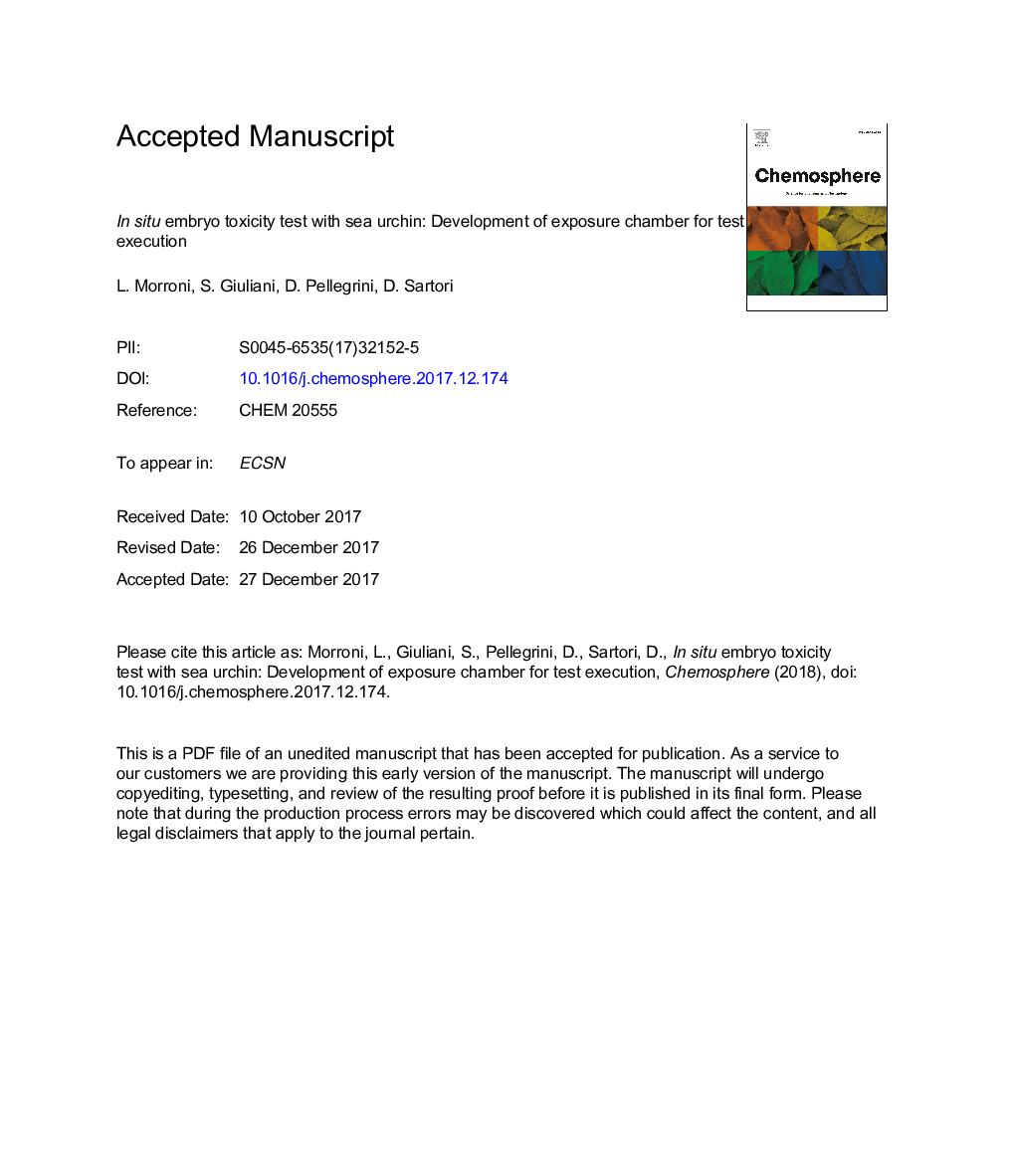| Article ID | Journal | Published Year | Pages | File Type |
|---|---|---|---|---|
| 8852113 | Chemosphere | 2018 | 16 Pages |
Abstract
In situ toxicity tests represent a technique rarely performed owing to the lack of standard methodologies or to technical or economic problems. Nevertheless, its application would allow for a more realistic interpretation of pollution effects than those obtained by standard laboratory tests. The goal of this study is to develop and validate a specific exposure chamber for in situ exposition of Paracentrotus lividus embryos to obtain a defined methodology to perform the sea urchin embryo toxicity test in field conditions. After a first part of the study to verify the feasibility of the test chamber and the methodology, this approach was used as a tool to investigate whether the cruise ship “Costa Concordia” shipwrecked on Giglio Island (Tuscany, Italy), could have acted as a source of pollution. The results obtained for in situ tests showed, on average, percentages of normal embryos lower than those obtained in laboratory conditions and a greater sensitivity than for those obtained in the laboratory owing to the time-integration of results. Thus the exposure chamber and the in situ methodology so far developed would appear to be suitable tools for future application in the environmental quality evaluation of marine waters.
Related Topics
Life Sciences
Environmental Science
Environmental Chemistry
Authors
Lorenzo Morroni, Silvia Giuliani, David Pellegrini, Davide Sartori,
